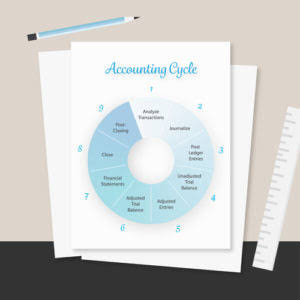
Insurance Expense, Wages Expense, Advertising Expense, Interest Expense are expenses matched with the period of time in the heading of the income statement. Under the accrual basis of accounting, the matching is NOT based on the date that the expenses are paid. Fees earned from providing services and the amounts of merchandise sold.
Ensuring Financial Integrity in Church Operations

The left-hand side is where you enter debits whilst the right-hand side is where you enter credits. Understanding the difference between credit and debit is essential for this process. Due to the fortunate ‘T’ shape, these diagrams can be used to map out transactions before they are posted into the company’s ledgers to ensure they are correct. An allowance granted to a customer who had purchased merchandise with a pricing error or other problem not involving the return of goods.
Financial Impact of the Affordable Connectivity Program

Even with the disadvantages listed above, a double entry system of accounting is necessary for most businesses. This is because the types of financial documents both businesses and governments require cannot be created without the details that a double entry system provides. These documents will allow for financial comparisons to previous years, help a company to Law Firm Accounts Receivable Management better manage its expenses, and allow it to strategize for the future. A double entry system is a detailed bookkeeping process where every entry has an additional corresponding entry to a different account.
Understanding the New FASB Tax Disclosure Requirements

Errors in T accounts can be corrected by analyzing transactions and identifying discrepancies. Once t accounts errors are identified, adjustments can be made by posting correcting entries to ensure the accuracy of account balances. If you’re filing your own taxes, you can use T-accounts to organize your income and expenses. Create separate T-accounts for different income sources like wages, interest, or business income. Loan officers and credit analysts use T-accounts to assess the financial health of potential borrowers.
At the end of an accounting period, revenue and expense accounts are closed to the Retained Earnings or Owner’s Equity account. This process involves transferring the balances of revenue and expense accounts to the equity accounts to prepare for the next accounting period. T accounts provide a clear and concise way to track the flow of financial transactions for individual accounts. They facilitate the recording and analysis of transactions, making it easier to prepare financial statements and understand the financial health of an organization. Your bank statement (like the general ledger) shows your overall checking account balance. But you might also have a budgeting spreadsheet (like a T-account) that details every single expense and income you have.

Do You Qualify for the Home Gain Sale Exclusion?
- Getting the hang of recording transactions in accounting is key to keeping your financial records straight.
- In this image, you can see a T-account which shows my bank account for the first week of March.
- But what goes where can depend on the type of account you’re dealing with.
- In contrast, automated accounting systems offer built-in controls and validation checks, reducing the risk of mistakes and fraud.
- You won’t find T-accounts in single-entry accounting, where each transaction only hits one account.
This T appearance has led to the convention of ledger accounts being referred to as T-accounts. Every month £2000 is credited from this account, reducing the asset as I make use of the property. T-accounts help to visualise the process making it clear what is occurring with each transaction. So, to show this, T-accounts are usually displayed in pairs to show the impact of a complete business transaction in your accounts. A bill issued by a seller of merchandise or by the provider of services. The seller refers to the invoice as a sales cash flow invoice and the buyer refers to the same invoice as a vendor invoice.
Five Steps to Elevate Self Pay Patient Collections in Medical Practices
Customers’ bank accounts are reported as liabilities and include the balances in its customers’ checking and savings accounts as well as certificates of deposit. In effect, your bank statement is just one of thousands of subsidiary records that account for millions of dollars that a bank owes to its depositors. As the entry shows, the bank’s assets increase by the debit of $100 and the bank’s liabilities increase by the credit of $100. The bank’s detailed records show that Debris Disposal’s checking account is the specific liability that increased.



